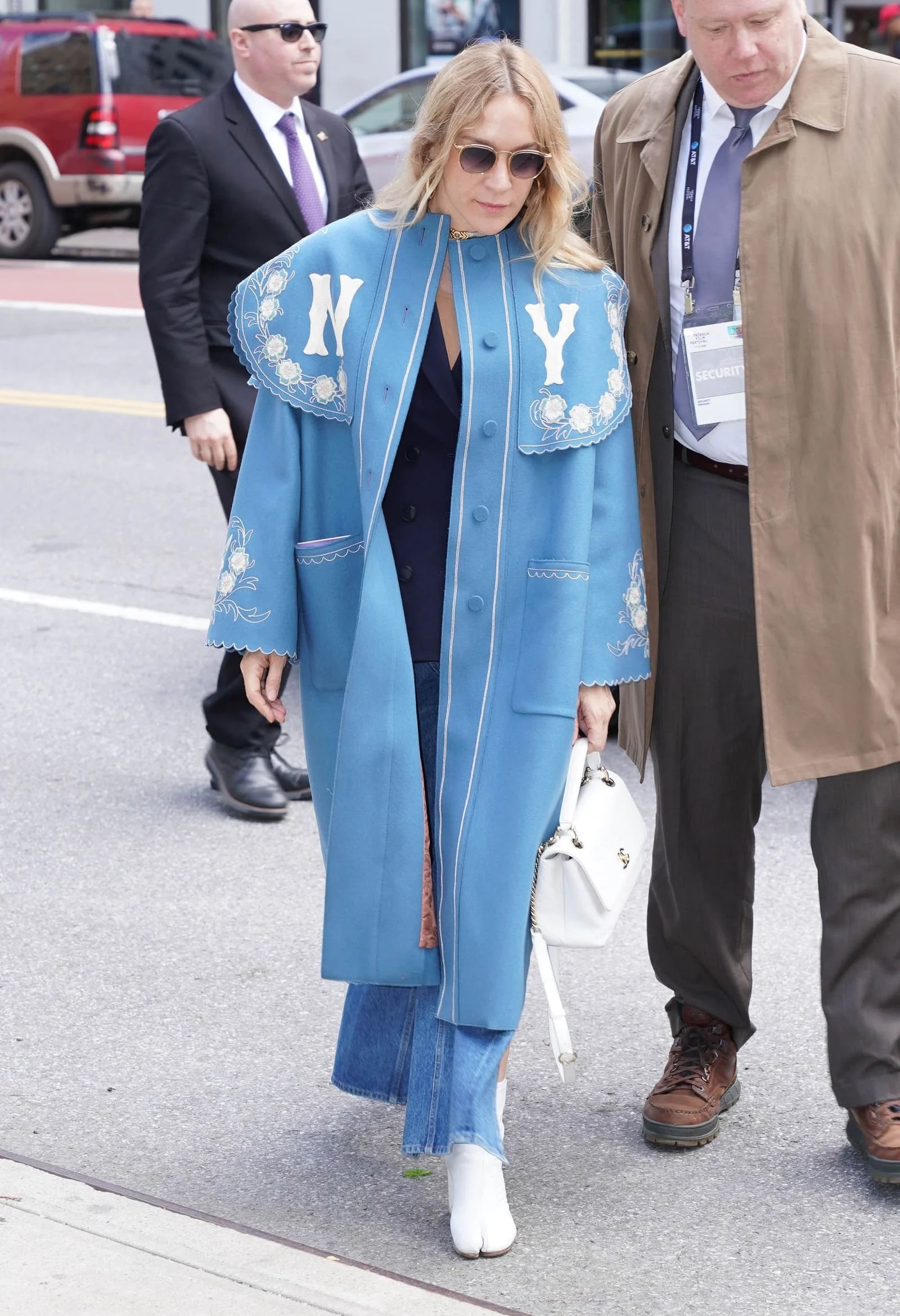Digital Foot Fetish
There's an unavoidable foot-centricity to the way Tabis are shaped, photographed, and discussed. This, paired with their post-ironic meme-ification, begs the question — has the internet ultimately fetishized them?
Models wearing Maison Margiela Tabi boots, their silhouettes taper at the ankle to reveal the distinctive split-toe design, positioning the Tabi’s uncanny and polarising appeal within a refined, high fashion context. Photograph featured in SSENSE’s editorial: The Uncanny appeal of Tabi boots, available via SSENSE © All rights belong to their respective owners. No copyright infringement intended.
Tabis were debuted in 1988 by the Belgian designer Martin Margiela for his first Maison Margiela runway. The shoes were dipped in red paint before adorning the runway, where their legacy of forever leaving a mark was thus enshrined. Tabis are nothing if not divisive, and have sparked fervent discussion within the fashion and online world- never before had we seen cloven shoes, shoes that morph and separate our bodies, reshaping and de-humanifying us.
Philosophers Giles Deleuze and Felix Guttari authored ‘The Body without Organs’, working to reimagine the body as a desiring object made up of ‘flows’ and ‘intensities’ rather than limbs, organs, or in this case, toes. Margiela’s penchant for chin stroking deconstructionist designs encapsulates this school of thought perfectly; the Tabi functions to break down the body into a new topology- subverting its boundaries and creating something uncanny.
It's this provocation and downright unusualness that saw the Tabi empire climb the ranks from niche to must have, having trickled down from the feet of Parisian fashion intellectuals and Chloe Sevignys of the world to Depop seller listings. Their popularity was championed by celebrities like FKA twigs and A$AP Rocky, highly influential fashion moguls known for dressing on the fringe of high fashion strangeness- they get it and the shoe is a referential wink to this. It’s an ‘if you know, you know’ thing, whilst simultaneously now being plastered all over your FYP.
As a consequence of this, the internets’ gaze has tilted way down. Feet are being consumed, adorned, idolised and debated- the Tabi has gone meta and thus has taken on a whole new social meaning. Scrolling through apps like TikTok, it isn’t hard to find clips of couples passing cigarettes to one another or balancing wine glass stems in their split toes. The Tabi is elegant, for couples, for wine, for jazz bars and cigarettes- the Tabi is a symbol of sensuality that happens to be architectured around the foot. Their newfound normalcy online leaves them sitting in a strangle place, you’re both a cool girl and a freakish therianthrope. More sceptical individuals often comment below Tabi videos, likening them to ‘pig hooves’ or ‘trotters’, yet this seems to be an acute part of the allure; the cloven nature of Tabis doesn’t elevate the wearer, rather debases them to something beastly, acting as a site of animal magnetism- chic hooves, if you will. The Tabi works to arouse without being explicit and disturb without being grotesque- with its fetish power lying in this tension.
The meme-ification of the Tabi both intensifies and normalises and shifts its provocativeness into something post-ironic. Posts like ‘send tabi pics’, or comments deeming them a shoe fit for the ever ostracised ‘furry’ community, position them as a cultural token that both references high fashion and meme culture literacy- Tabis are fetish-lite, cosplay you can wear to brunch whilst affirmably still being cool.
This foot-centred eroticism is nothing new, think back to the history of Chinese foot binding fuelled by the endeavour to reshape the foot for sexual merit. Why are we still so obsessed with the inhuman transformation of the foot? Freud argues the fixation upon the foot stems from the approach of the foot as a kind of penis ‘substitute’, a displaced stand-in for sexual desire which has positioned the foot as a battleground for gendered fetish. However, the recent meta popularity of the Tabi skews this perversion by embracing it- sculpting leather around the toes in a way that de-beautifies whilst stylises the foot.
In all, the Tabi’s strength lies in its ambiguity, its meaning split (literally) between internet meme, foot fetish bait, and high fashion archive. Its divisive nature invites both wearers and voyeurs to really analyse its form, revelling in its perverse, maybe even gauche appeal- proving that coolness is about nerve; and no she has more nerve than the one that makes you want to send feet pics.
Chloë Sevigny in a powder blue Western-style coat and white Tabi boots — a subtle nod to Margiela’s 1988 debut, where the red hoof-print-stained runway cover was turned into a deconstructed waistcoat. The look gestures toward the Tabi’s layered history as both garment and concept. Image via JNI/Star Max. Available via Vogue © All rights belong to their respective owners. No copyright infringement intended.


